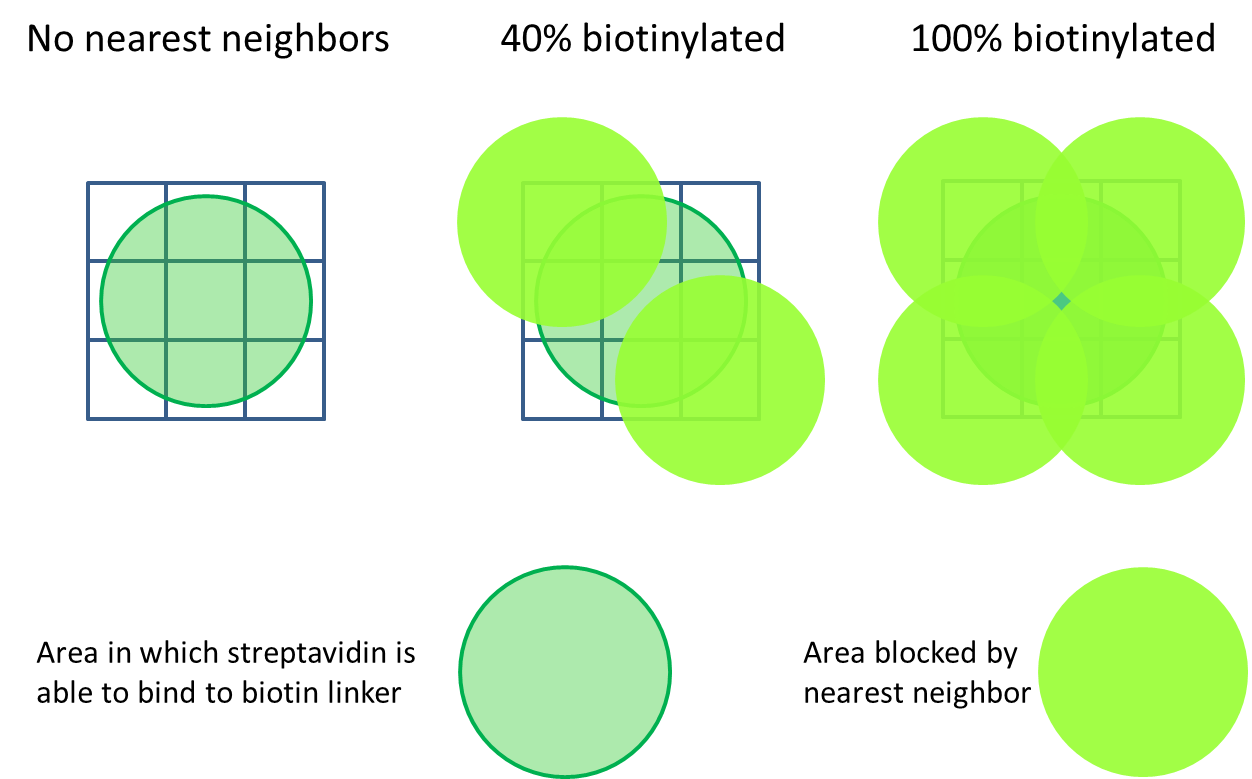Streptavidin adsorption onto biotinylated microtubules

Binding sites are close and flexible enough that the presence of other streptavidin molecules on the surface eliminates paths which an adsorbing streptavidin molecule can take to a free binding site.
The biotin-streptavidin bond is one of the strongest bonds found in nature, and can be used to cross-link moving microtubules. Here, microtubules are functionalized with biotin, which attaches to exposed lysine sites on the tubulin. Streptavidin has four biotin binding sites, which allows it to connect one microtubule to another.
In the past, typical assays involving cross-linking of microtubules assumed that a 5 minute adsorption time was sufficient for all of the streptavidin in the flow cell to adsorb onto the microtubule due to its diffusion constant of ~120 μm2 s-1 (a typical experimental flow cell has a height of about 100 um) and on-rate of about 106 M-1 s-1 (Kd ≈ 10-14 M). However, experiments performed by our group showed that was not the case; after 5 minutes, the streptavidin concentration on the microtubules still had not plateaued, and the adsorption process was still well in the kinetic regime.

Binding sites are close and flexible enough that the presence of other streptavidin molecules on the surface eliminates paths which an adsorbing streptavidin molecule can take to a free binding site.
I showed that electrostatic and steric interactions were sufficient to explain this retardation of the adsorption process: The presence of already-adsorbed streptavidin molecules increases the energy of the transition state of the adsorption process by limiting the pathways in space through which an adsorbing streptavidin molecule can approach the binding site. Estimates of the calculations were supported by experiments with neutravidin (an electro-neutral variant of the streptavidin protein) as well as in experiments where the average spacing between biotin binding sites were increased.
For further reading, see S. He‡, A. Lam‡, Y. Jeune-Smith‡, and H. Hess, Langmuir (2012).